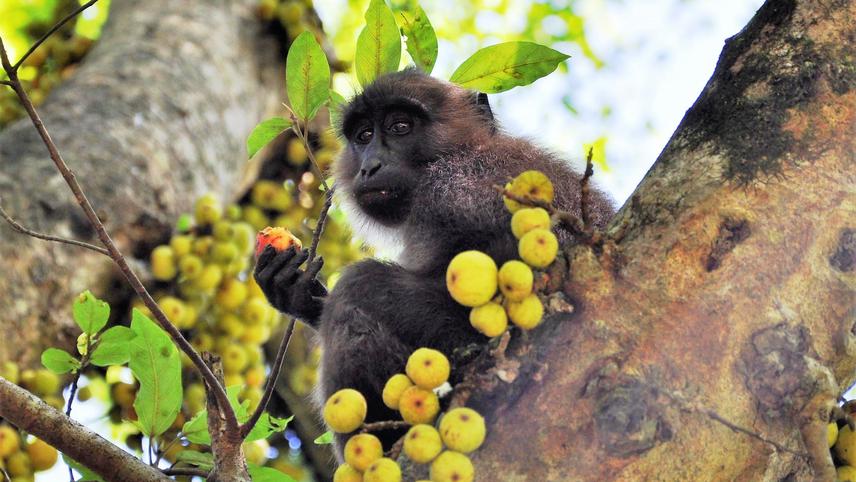Cristina Sagnotti
The endemic moor macaque (Macaca maura) is the only frugivorous primate species in South Sulawesi. Despite its important role in forest ecosystem restoration, there is a clear lack of information regarding the actual distribution and conservation trend. As reported in the last IUCN assessment, an updated census is desperately needed, also considering the alarming trend of habitat loss and forest fragmentation in its geographic range. The Bantimurung Bulusaraung National Park, established in 2004 to preserve an area of 43,750 Ha, contains a mixture of lowland and lower mountain forests, fragmented by human settlements (cultivated fields, villages, roads, etc.), and the second largest karst landscape ecosystem in the world, characterized by steep limestone towers covered by intact forests.
The main aim of this project is to analyse distribution, habitat suitability, population structure and gene flow of moor macaques in the Bantimurung Bulusaraung National Park (TNBabul) to understand the current conservation status of this endangered species, identify critical issues and propose practical solutions.

Sub-adult male moor macaque (called Pino) eating figs (Ficus glomerata Roxb.) in the Bantimurung Bulusaraung National Park, South Sulawesi, Indonesia. © Cristina Sagnotti, 2010.
To achieve this goal, this project has the following objectives:
- To produce the first habitat suitability map of moor macaque population in the TNBabul and to predict current and potential distribution on the entire geographic range.
- To carry out the first non-invasive genetic study and implement a standard protocol to fill the lack of knowledge about genetic variability at intraspecific level.
- To evaluate the effect of landscape characteristics on the population genetic structure.
- To identify potential ecological corridors to promote functional landscape connectivity among isolated forest patches.
During the fieldwork, surveys of stratified-random plots will be carried out in collaboration with the TNBabul staff, to collect occurrence data. Faeces samples will be opportunistically collected to carry out the first non-invasive genetic monitoring program for this species, and we will use habitat suitability models not only to describe and predict moor macaque’s distribution, but also to measure how landscape features may influence individual dispersal, genetic variation, and gene flow.
This project will put the basis for a better understanding of local adaptation processes of a key species in forest regeneration, and to predict its potential distribution based on habitat suitability and landscape connectivity.